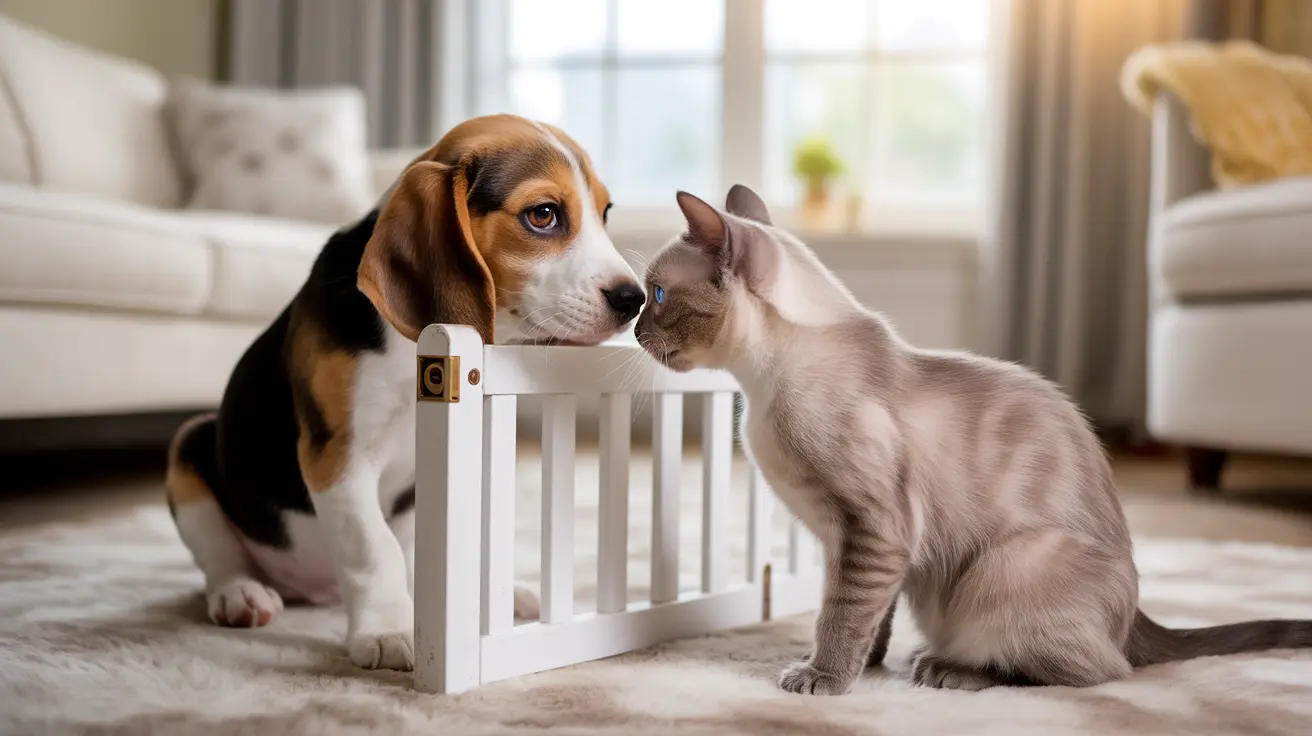If you're considering adding a Beagle to your cat-loving household or vice versa, you're likely wondering about their compatibility. The good news is that Beagles can indeed live harmoniously with cats, though success depends on several key factors including proper introduction, training, and understanding of both animals' natural instincts.
As recognized by the American Kennel Club, Beagles often rank among the more cat-friendly dog breeds, thanks to their sociable and pack-oriented nature. However, their hunting heritage means some extra consideration is needed to ensure a peaceful multi-pet household.
Understanding Beagle Temperament with Cats
Beagles possess several characteristics that can make them excellent companions for cats. Their friendly, social nature and pack mentality often lead them to view cats as potential family members rather than prey. However, their hunting background as scent hounds means they do have a natural prey drive that needs to be managed.
Key temperament traits that affect Beagle-cat relationships include:
- Sociable and pack-oriented behavior
- Natural hunting instincts
- High energy levels requiring proper outlet
- Generally gentle disposition
- Strong scenting abilities that may fixate on cats
Factors Affecting Successful Cohabitation
Early Socialization
The age at which a Beagle is introduced to cats plays a crucial role in their future relationships. Beagles raised with cats from puppyhood typically develop the strongest, most natural bonds with their feline housemates. Adult Beagles with positive cat experiences also tend to adjust well to new feline family members.
Individual Personality
Every Beagle has a unique personality that influences their cat-compatibility. Some show natural gentleness and curiosity toward cats, while others may display stronger hunting instincts. Understanding your individual dog's temperament is crucial for successful integration.
Creating a Safe Environment
Setting up your home properly is essential for peaceful coexistence between Beagles and cats. Key considerations include:
- Designated safe spaces for cats, including high perches
- Separate feeding areas to prevent resource guarding
- Baby gates for controlled introductions
- Multiple litter box locations inaccessible to the dog
- Scratch posts and cat trees for vertical escape routes
Training and Management Strategies
Successful Beagle-cat households require consistent training and management. Focus on:
- Teaching basic commands like "leave it" and "stay"
- Rewarding calm behavior around cats
- Providing adequate exercise to reduce prey drive
- Supervising all interactions until trust is established
- Maintaining regular routines for both pets
Frequently Asked Questions
Are Beagles naturally good with cats, or do they need special training to coexist peacefully?
While Beagles can be naturally friendly with cats, they typically need training and proper introduction to ensure peaceful coexistence. Their hunting instincts require management through positive reinforcement and consistent training.
How can I safely introduce my Beagle to a resident cat to ensure they get along?
Start with separate spaces divided by a baby gate, allowing them to see and smell each other without direct contact. Gradually progress to supervised interactions while keeping the cat safe and the dog leashed, rewarding calm behavior from both pets.
What signs indicate my Beagle has a strong prey drive that could be dangerous to a cat?
Watch for intense fixation on the cat, inability to break focus when called, aggressive lunging or barking, and persistent chasing attempts. These behaviors require immediate professional intervention.
Can multiple Beagles living with cats cause more problems than just one Beagle?
Yes, multiple Beagles may develop pack mentality and team up to chase or overwhelm cats. It's generally easier to manage one Beagle with cats than multiple dogs.
What strategies can help reduce chasing behavior in Beagles when living with cats?
Regular exercise, mental stimulation, positive reinforcement training, and consistent correction of chasing behavior can help. Ensuring the Beagle has appropriate outlets for their energy and hunting instincts is crucial.
Conclusion
With proper introduction, training, and management, Beagles can indeed become wonderful companions to cats. Success depends on understanding both animals' needs, providing appropriate training and socialization, and creating an environment where both pets feel safe and respected. While some work may be required initially, the reward of a harmonious multi-pet household is well worth the effort.






